|
HOME: www.hiltonpond.org |
|||
THIS WEEK at HILTON POND Subscribe for free to our award-winning nature newsletter (Back to Preceding Week; on to Next Week) |
|
All text, maps, charts & photos © Hilton Pond Center 2013 BIRD BANDING RESULTS: Banding results for 2013 at Hilton Pond Center showed modest but noticeable improvement over last year with 1,511 individuals banded--including two locally scarce Black-throated Green Warblers (above). But beating last year's totals wouldn't have been all that hard; during more than three decades at the Center 2012 was our least productive banding year ever (1,083 birds). Improvements in 2013 came despite health difficulties experienced by the resident bander (Bill Hilton Jr.); specifically, a bout with pneumonia in January and early February kept him indoors, and elbow surgery to stop muscle loss in his banding hand brought an end to bird captures from mid-November through the last week of December.
All text, maps, charts & photos © Hilton Pond Center On days when we WERE at the Center (plat above) we almost always ran a few traps for songbirds (locations A, B & C) and really concentrated on hummingbirds coming to feeders at those locations late March through mid-October. When weather and time allowed, we typically deployed 6-8 mist nets just outside the old farmhouse and office (larger red box on map) where we could keep a close eye on them. During spring and fall migration periods we also tried to run nets at various spots along the outlying nature trails (D thru Z).
All text, maps, charts & photos © Hilton Pond Center We don't open our nets at the Center when it's too hot or cold, when it's windy, or in the rain, so weather differences year-to-year have certain impact on banding results. (Regardless of weather, we're careful to check nets frequently and remove birds such as the Carolina Wren above before they receive any damage.) In 2013 a cool, wet spring and fall showers impeded net work, but we did try to run traps on some of those days. (Incidentally, we have deployed nets on cold winter nights to capture Northern Saw-whet Owls, but ever-larger Coyote clans that showed up several years ago now make that an unwise procedure.) Alas, we do not keep track of net- or trap-hours--we long ago found that was much too complicated for the way we work--so we can't accurately compare banding effort from one year to the next. Nonetheless, long-term banding studies do help us understand trends in nature.
All text, maps, charts & photos © Hilton Pond Center Year-to-year differences in net- and trap-hours certainly affect our banding results, but of greater significance is the way the landscape at Hilton Pond Center has changed during the 32 years we've worked and resided there. When we purchased the 11-acre plot in 1982 it was almost all open, the result of a century of agriculture that apparently included grazing and row crops such as corn, cotton, tobacco, and soybeans. We decided early on we would NOT be spending our time--or wasting resources--by cutting 11 acres of grass, so we allowed the land to go fallow, maintaining only the nature trails that meander for almost two and a half miles around the property. Vegetational succession ensued and local habitats passed through stages from old field to shrub land to Eastern Red Cedar stand to our current young forest of pine and sundry hardwoods. The photo above from March 2012 shows how thoroughly the land has become covered by woody growth--mostly Loblolly Pines on the north edge and hardwoods between the two ponds and on the southern half of the property. Just as vegetation has changed, so has bird life. All text, maps, charts & photos © Hilton Pond Center As shown on the chart above (click on it to open a larger version in a new browser window), 2013 ended with 1,511 birds banded from 54 species. These numbers were below the 32-year average of 1,865 individuals and 65 species; dotted trend lines also show a decline in both categories. This year's bird total was only a third of what we caught in our banner year of 1991 (4,061 individuals), and diversity in 2013 was about half compared to 95 species in that same year. We contend much of this discrepancy is the result of a big shift in vegetational cover--it was in the mid-1990s when the Center's previously open areas were becoming dominated by young trees--but it's possible newly epidemic West Nile Virus also took its toll. (On top of that, surveys show there simply are fewer birds in the world these days due to a wide assortment of factors from environmental toxins to habitat loss to free-roaming cats.)
All text, maps, charts & photos © Hilton Pond Center These days, shrub-loving birds like Eastern Towhees (fledgling male above), Brown Thrashers, and many of the sparrows are almost non-existent around Hilton Pond. Even Northern Cardinals (see chart below)--which also prosper along edges and in shrub-dominant landscapes rather than in woodlands or open meadows--now show diminished numbers after peaking during the "shrubby years."
All text, maps, charts & photos © Hilton Pond Center It did not help our local bird life that in 1996 an adjoining farmer to the north of the Center clear-cut about 75 acres of mature Loblolly Pines and converted the land to pasture for beef cattle. This brought about a near-instantaneous drop in numbers of species that breed, feed, roost, or winter in pine-lands, and populations declined among nesting species such as Blue Jays, Brown-headed Nuthatches, and Pine Warblers.
All text, maps, charts & photos © Hilton Pond Center Our 24 most common banded species at Hilton Pond Center are depicted on the chart above. House Finches continue to dominate with 9,339 individuals, but this year Purple Finches joined HOFI and American Goldfinches as members of the elite "8,000 Club."
All text, maps, charts & photos © Hilton Pond Center These three species plus Pine Siskins--which achieved the 2,500 level this past winter--comprise almost half (48.37%) of all birds banded at the Center. Other century-level milestones in 2013 came when Carolina Wrens (above) hit the 700 mark, Mourning Doves reached 500, and Song Sparrows became the 24th species to join our "400 Club."
All text, maps, charts & photos © Hilton Pond Center Folks often ask: "What's the most unusual bird you banded this year?" We're never quite sure how to answer that except to look at numbers and respond with the name of a bird we band rarely at Hilton Pond Center. Using that criterion, this year we caught two Black-throated Green Warblers (see image at top of photo essay), a species for which we've banded only 19 individuals in 32 years. Even less common was our 17th Prothonotary Warbler (second year male, above). ••FOREIGN ENCOUNTERS•• Banding birds at Hilton Pond Center is informative and enjoyable, but the ultimate satisfaction occurs when a bird banded here shows up elsewhere. That hasn't happened very often--only 61 of our 59,682 banded birds have been encountered outside York County--that small percentage (<0.1%) in part the result of having so few banders in the Carolinas. This year we were pleased to hear from the federal Bird Banding Laboratory about two "foreign encounters"--both for birds of considerable age.
The first report was from Judy Shepard who found a dead Purple Finch (file photo above) along the highway in Framingham, Massachusetts on 3 June 2012. Upon examining the bird she found a band and contacted the banding lab with its number (#1791-79378). Amazingly, this finch was banded here at Hilton Pond Center as a hatch-year bird of unknown sex on 28 December 2003, making it a tenth year bird at time of demise! (The known longevity record for a PUFI is 11 years, 9 months.) We were unsuccessful in attempts to contact Judy about whether the bird was red or brown when she found it; had it still been brown we would have known for sure it was a female.
All text, maps, charts & photos © Hilton Pond Center The second bird is the equally remarkable story of a White-throated Sparrow (file photo above) banded with #2281-11012 at Hilton Pond Center back on 7 December 2006 as hatch year, unknown sex. The sparrow was found dead by Antonin St-Jean after striking a stationary object in the courtyard of the biological sciences center at University of Quebec on or about 10 November 2013--eight years after banding! Upon getting the encounter report from the banding lab we checked our data files and learned that after being banded in 2006 this particular White-throated Sparrow returned to Hilton Pond Center with a re-trap on 17 Nov 2007--after which it likely spent the winter before being trapped again on 21 & 24 April 2008. We recaptured it the next year on 19 Jan 2009 and again on 18 Jan 2010, after which we never saw it again locally. The bird may have been here in later years, but it didn't enter one of our traps or get mist netted in 2011 or thereafter. ••RUBY-THROATED HUMMINGBIRDS••
All text, maps, charts & photos © Hilton Pond Center Because Ruby-throated Hummingbirds are one of our primary research interests here and in Central America, we were a bit disappointed in how things went with them locally in 2013. After banding 197 or more RTHU in eight of the nine most recent years at Hilton Pond Center, our ruby-throat numbers dropped dramatically to 155--fewest since 2003 and well below our average of 179.7 over 24 complete field seasons since 1984.
All text, maps, charts & photos © Hilton Pond Center The Center's first spring capture for ruby-throats this year came on 8 April, more than a week later than our earliest-ever (27 February). After that, captures moved along at an average pace (compared to 24 complete field season) with a higher-than-average number of adult males and adult females (AHY, or after hatch year) being trapped or mist-netted. In about mid-July the capture rate began dropping behind the norm and never caught back up, largely because we did not see a big influx of immature (HY, or hatch year) hummers. In fact, except for adult males all age/sex classes finished with below-average numbers (see chart above). We hypothesize the relative lack of young birds in particular was caused partly by a cool, wet spring in the South Carolina Piedmont that led to lower reproductive success for local hummers in 2013.
All text, maps, charts & photos © Hilton Pond Center It's curious that despite 2013's lower-than-normal numbers of new Ruby-throated Hummingbirds, we had an exceptionally good year for returns of RTHU banded in previous years (see chart above); our 46 "old birds" nearly matched the record of 49 set in 2007 and was well above the 30-year average of 23.7.
All text, maps, charts & photos © Hilton Pond Center Worth special mention is #Y15972 (above), a female banded locally as a hatch year on 31 August 2006 and recaptured every year since; this eight-year bird has put in a lot of flight time between Hilton Pond and her wintering grounds, likely in Central America. She's also approaching her species' longevity record of nine years. Other old female hummers included one from 2008 (6th year) and two from 2009 (5th year); the oldest males were three 4th-year birds from 2010. ••"YARD LIST" & NESTING SPECIES••
All text, maps, charts & photos © Hilton Pond Center Incidentally, our "Yard List" of birds seen through the years on or over Hilton Pond Center remained at 171; the most recent new species came when we saw banded eight Savannah Sparrows during a January 2011 snowstorm. (Our newest banded species--#126--was a Barred Owl in April 2012.) During 2013 we saw or heard a total of 82 bird species, a little less than half our cumulative total. Among species encountered at the Center we've found nests for 25, the latest being a cluster of sticks Ernesto discovered in our front yard in late April this year; it contained two young Red-shouldered Hawks (above) that successfully fledged.
All text, maps, charts & photos © Hilton Pond Center ••SUMMARY•• A complete list of 1,511 birds of 45 species banded at Hilton Pond Center in 2013 is provided in the table below. Only one species--Cooper's Hawk (second-year male, above)--reached or tied a new high (in red type on chart), although Mourning Doves almost made it. We're pleased 20 species (green type) were banded in numbers at or above their 32-year-average--especially since last year that was true for only 15 species. The remaining 29 species (black type) banded this year came in with below-average numbers, and more than half the 126 species banded locally since 1982 never entered our nets or traps at all in 2013.
All text, maps, charts & photos © Hilton Pond Center We invite you to examine the table below for trends or for whether we banded your favorite species--perhaps an immature Hermit Thrush (above) that was our last bird banded in 2013. Even if we were below average on this year's banding totals, there's something to be said for long-term projects providing solid baseline data that lead to better understanding of avian ecology. We're proud to report we've been at it since 1982 at Hilton Pond Center--to our knowledge still the most active year-round banding station in the Carolinas. All text, maps, charts & photos © Hilton Pond Center All contributions are tax-deductible on your
All text, maps, charts & photos © Hilton Pond Center POSTSCRIPT: You can also visit Hilton Pond Center's Facebook page for more photos of birds banded and a running account of local nature happenings and any field trips in the Carolina Piedmont or beyond.. It's at FACEBOOK. Please "like" us when you visit. |
|---|
|
"This Week at Hilton Pond" is written and photographed by Bill Hilton Jr., executive director of Hilton Pond Center for Piedmont Natural History
|
|
|
Please refer "This Week at Hilton Pond" to others by clicking on this button: |
Comments or questions about this week's installment? Send an E-mail to INFO. (Be sure to scroll down for a tally of birds banded/recaptured during the period, plus other nature notes.) |

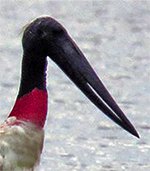
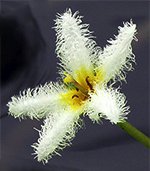

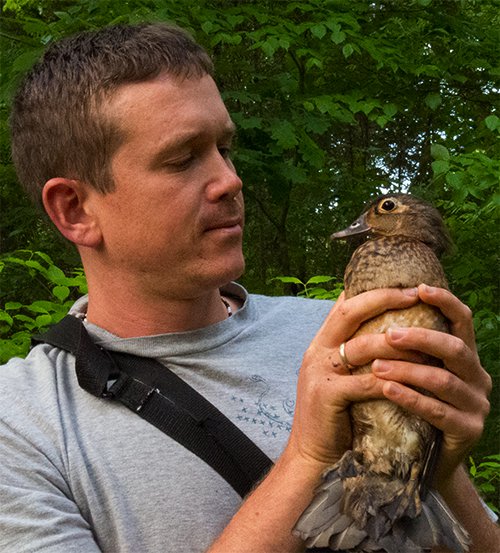 Local banding also took a 30-day hiatus mid-February through mid-March for Operation RubyThroat's citizen science expeditions to Nicaragua and Belize, and again for 11 days in early November for the Costa Rica trip. Banding activity at the Center shut down for 2-7 days on several occasions throughout the year when the bander was out of town for consulting work or speaking engagements, so counting illness and travel 2013 had more days of non-banding than usual. One bright spot was the presence of our Costa Rican guide and colleague Ernesto Carman Jr.
Local banding also took a 30-day hiatus mid-February through mid-March for Operation RubyThroat's citizen science expeditions to Nicaragua and Belize, and again for 11 days in early November for the Costa Rica trip. Banding activity at the Center shut down for 2-7 days on several occasions throughout the year when the bander was out of town for consulting work or speaking engagements, so counting illness and travel 2013 had more days of non-banding than usual. One bright spot was the presence of our Costa Rican guide and colleague Ernesto Carman Jr. 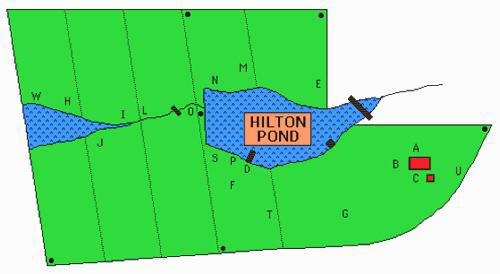
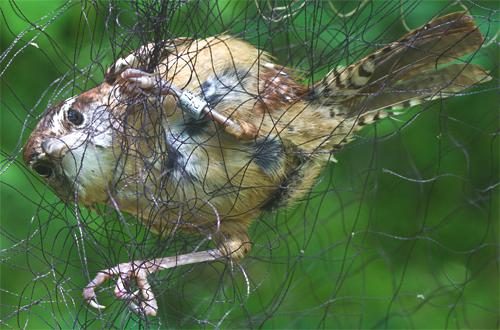
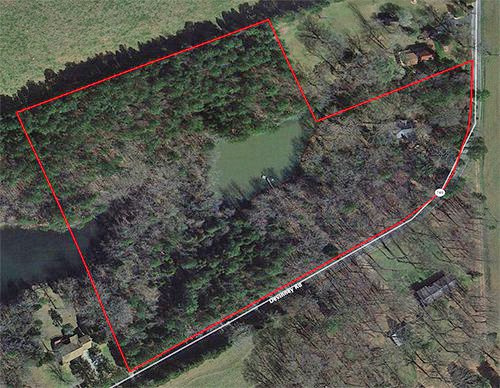
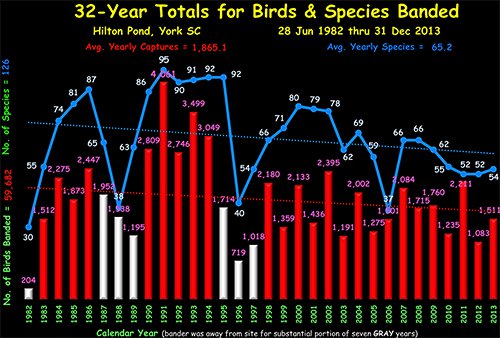
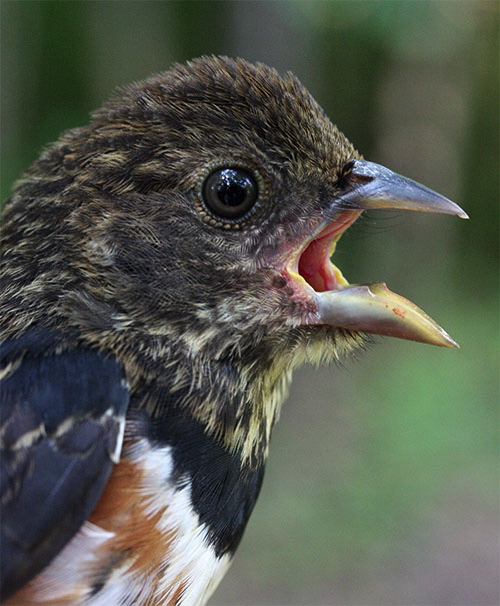
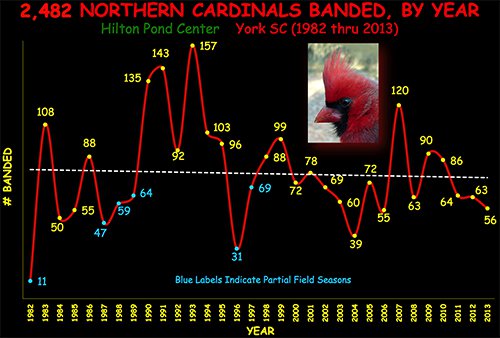
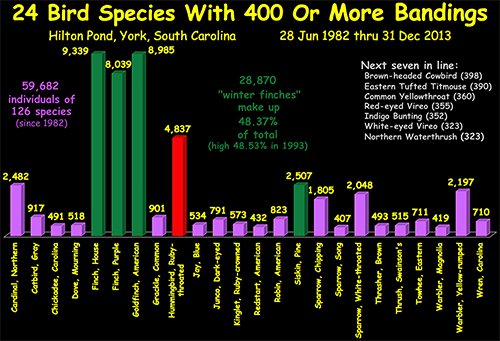
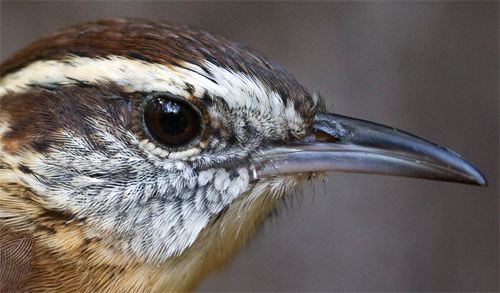
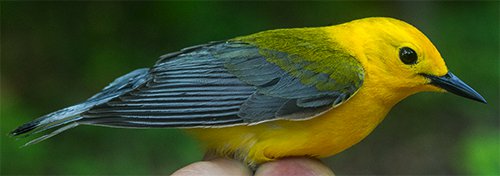
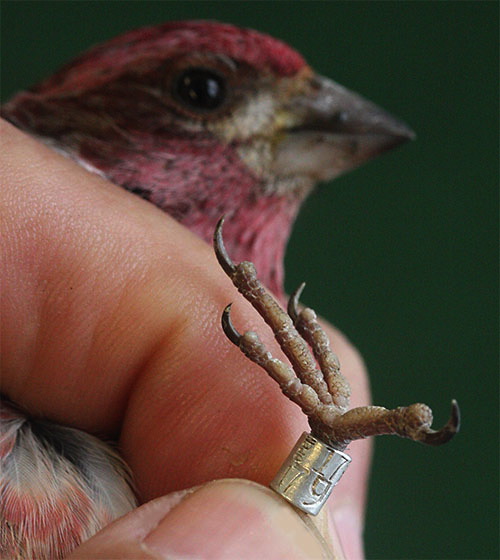


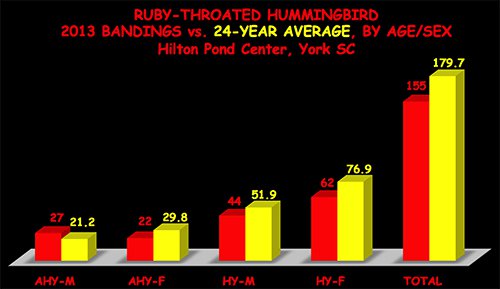


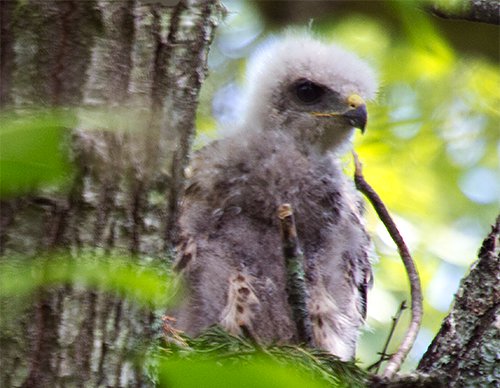
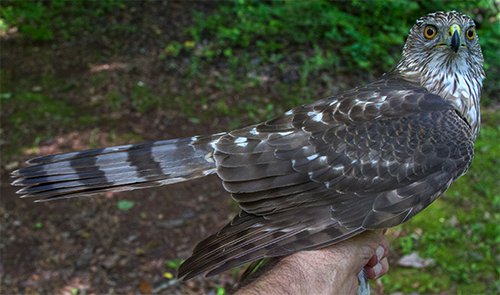








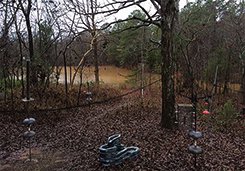
 Oct 15 to Mar 15:
Oct 15 to Mar 15: